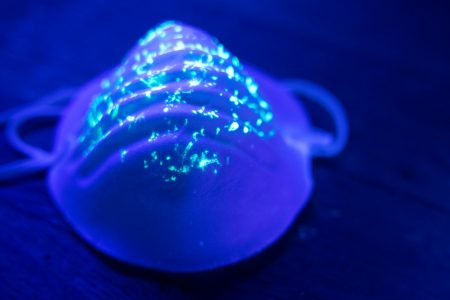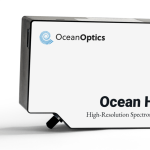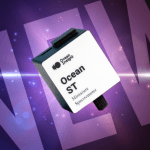In the battle against COVID-19, UV sterilization techniques can extend the life of high-demand personal protective equipment (PPE). But does your UV lamp provide enough power to disinfect face masks safely?
When COVID-19 started its march around the globe, the need for unprecedented amounts of PPE quickly followed. The strain on PPE supplies including face masks critical to slowing the spread of the virus motivated the Centers for Disease Control and Prevention (CDC), PPE manufacturers and researchers around the globe to investigate the effectiveness of available techniques to disinfect used face masks for reuse. Because of this work, the CDC has released guidelines for the use of ultraviolet germicidal irradiation (UVGI), vaporous hydrogen peroxide (VHP), and moist heat for disinfecting used face masks without significantly impacting the function and integrity of the treated masks.
UVGI has shown promise and is widely accessible with UV lamps and UV sterilization instrumentation available in many hospitals and laboratories. The caveat to using UV light for this purpose is that the effectiveness of disinfection is highly dependent on the UV dose delivered to the face masks. With UV intensity that varies widely from lamp to lamp, it is challenging to ensure used masks are treated with the recommended dose of UV power. With an accurate measurement of UV lamp power, treatment times can be adjusted to ensure the proper dose of UV to ensure the safe reuse of face masks.
Reach Out to Our Experts
Characterizing UV Lamps
Ocean Insight offers the optical sensing solutions and know-how to monitor the power and spectral profile of UV lamps. Our systems have the flexibility to accurately measure UV levels at the same location on the masks to ensure sufficient virus- and bacteria-killing light at the proper wavelength is delivered.
In most cases, simply measuring the presence of a wavelength isn’t enough. You need to be able to quantify total exposure/dosage over a period, as this is what provides the disinfection/sterilization (i.e., a 5W UVC light will not have the same output as a 50W UVC, so exposure times need to be adjusted to ensure proper dosage). Users should be aware that many quick-fix UV lamp solutions now flooding the market are inadequate for the task.
Indeed, variability in lamp output intensity is not unusual within medical applications. Earlier, a customer involved in monitoring the output of dental curing lamps successfully integrated an Ocean Insight spectrometer and sampling optics into its system. This setup ensured a simple, safe method for characterizing lamps used to cure the resins that cement dental fillings.
Although these dental curing lamps produce visible wavelengths, similar spectral measurement procedures can be adapted for UV wavelengths (UVC, UVB and UVA) and for total UV irradiance. Systems can be configured to enable measurements with different geometries, in a range of locations for measuring output from virtually any UV lamp, and can be engineered for handheld use. A streamlined user interface makes measurements and tracking simple and hassle-free.
Applied Spectral Knowledge at Work
Applying spectral sensing to biomedical and life sciences challenges like those we face today requires a carefully considered combination of scalable hardware, application know-how and algorithm development. Ocean Insight is your partner in applying spectral knowledge to solve diagnostic and monitoring challenges.



